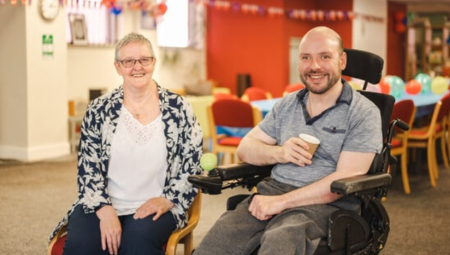Summary
Borderline personality disorder (BPD) is a severe mental health problem characterised by unstable emotions, intense but difficult relationships, disturbed sense of self and impulsive behaviour such as self-harm and suicide. BPD usually begins during adolescence and continues into adulthood, often with devastating personal, social and economic consequences. The prevalence of BPD in adolescence is estimated at 3%: approximately one child in every classroom. Although there are effective treatments for BPD, few individuals are able to access these treatments, and often only after they have been experiencing distressing and disabling symptoms for many years.
Project Aims
The aim of this study was to investigate whether it is possible to deliver early, specialised support to young people with symptoms of BPD including self-harm through working in partnership with schools and colleges. Self-harm in young people has increased alarmingly in recent years. This increase is overwhelming schools and colleges who are inadequately supported to meet the needs of pupils with the most severe mental health problems due to poor integration between education and health services. This study investigated a brief intervention that aims to equip education professionals with the knowledge and skills to support pupils with symptoms of BPD including self-harm. Staff from participating schools and colleges took part in a training workshop in preparation for co-delivering a series of 3 6 sessions to individual pupils from their institution together with a CAMHS professional. Sessions were informed by existing evidence-based treatments for adolescent BPD and were designed to help young people understand the problems they are experiencing and learn to manage them better.
Project Activity
The intervention is designed to reduce BPD symptoms by decreasing the emotional instability at the heart of the disorder, both by: (a) delivering the key elements of evidence-based interventions for adolescent BPD at an early stage, before symptoms become entrenched, and (b) reducing the confusion and anxiety that often surrounds young people with BPD who self-harm by equipping education professionals with the knowledge and skills to support pupils with BPD. In the first stage of the study, we used the findings of existing research to refine the intervention and pilot it within schools and colleges. In the second stage, to test whether it will be possible to evaluate the effects of the intervention in a fair and unbiased way, participants were allocated at random to either receive the study intervention or standard care. Young people aged 13-18 years with symptoms of BPD including self-harm were invited to take part and, if they consent, would be screened to ensure the study is suitable for them. All participants were offered an assessment of their mental health with a study research assistant on entry to the study and 8 and 24 weeks later. Participants were also invited to take part in in-depth interviews to help us understand their experience of taking part in the study. In addition, school and college staff will be asked to log the contacts they have with participants during the study and detailed observations will be carried out at each school and college to understand how the intervention is delivered in differing institutions.
The results of the study was shared with participating schools and colleges and used to inform the design of a future study evaluating whether the intervention leads to improved outcomes for young people.
Further details can be found here





